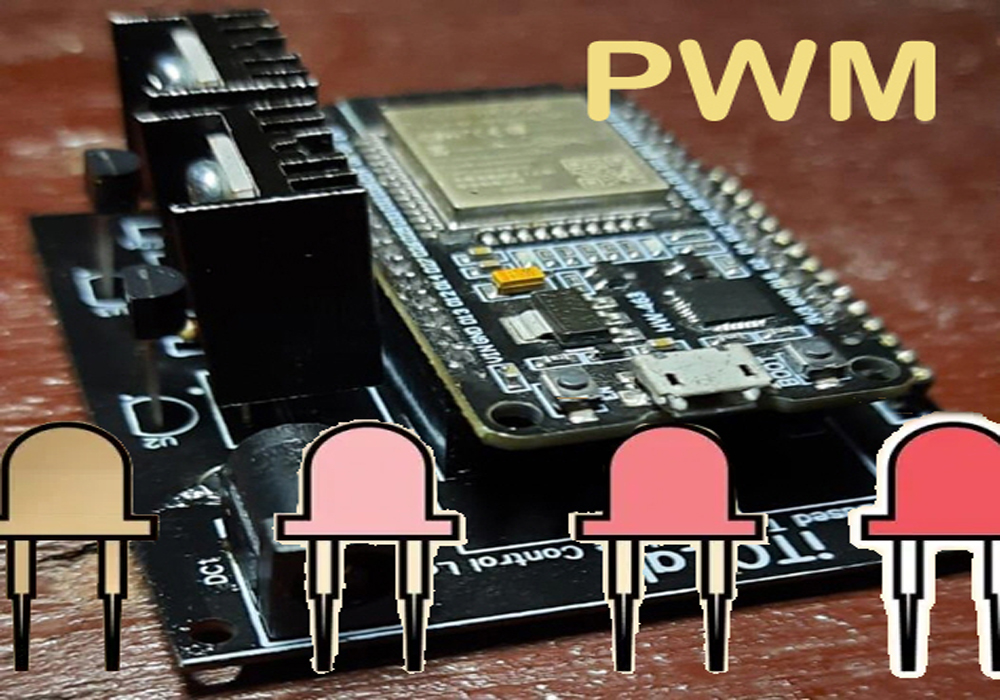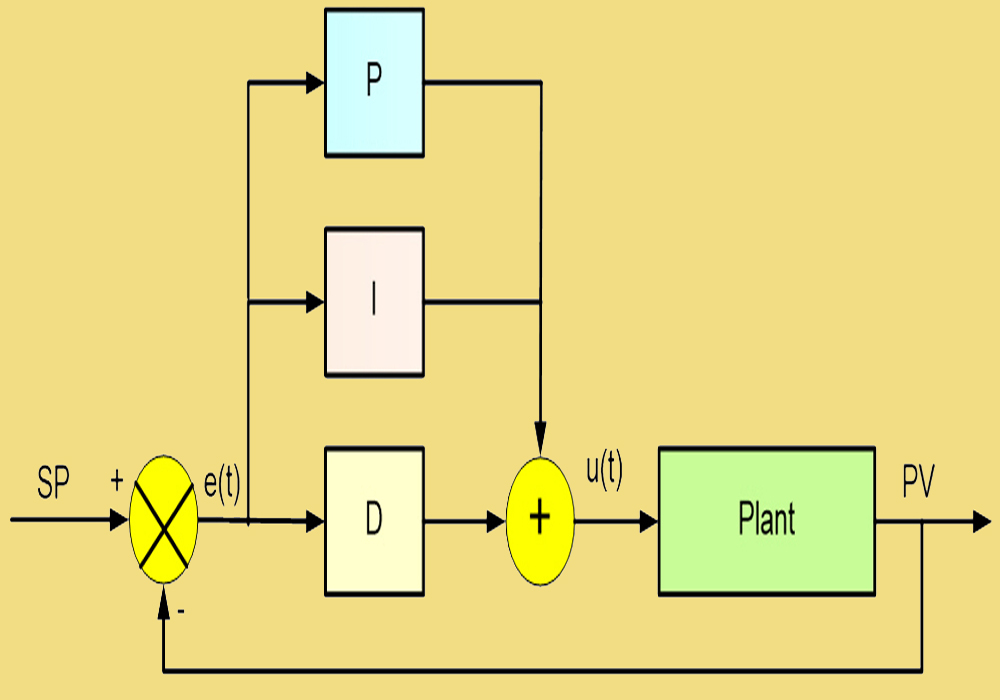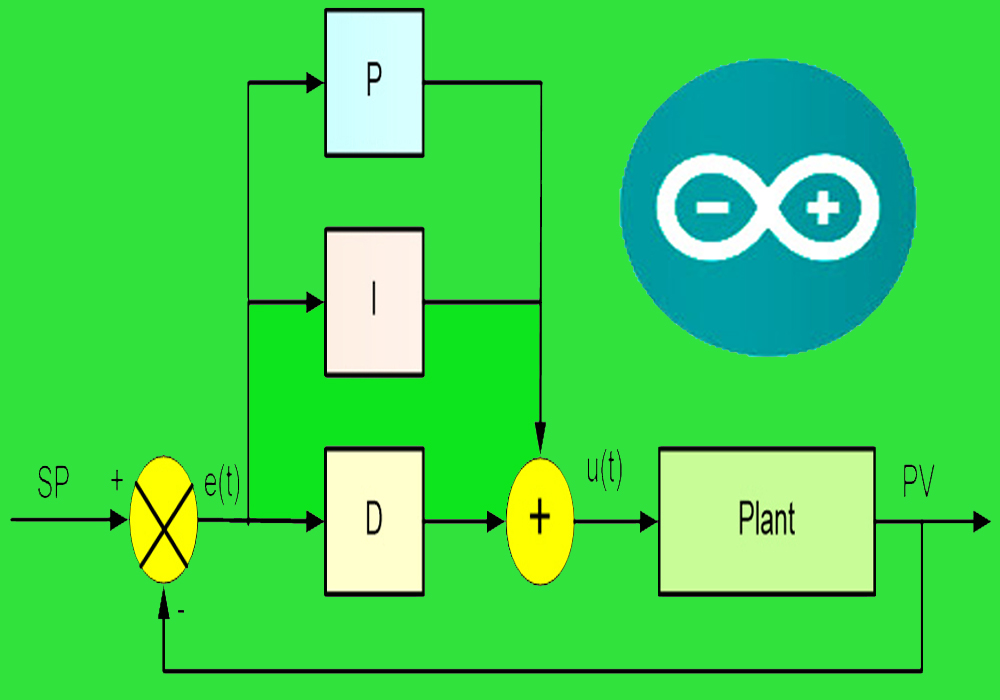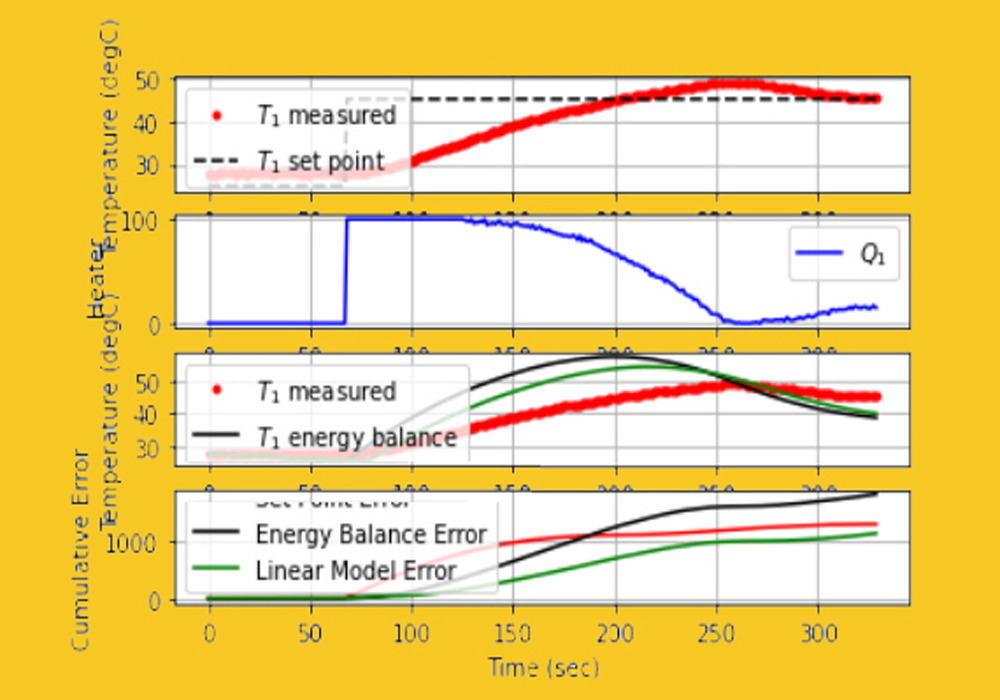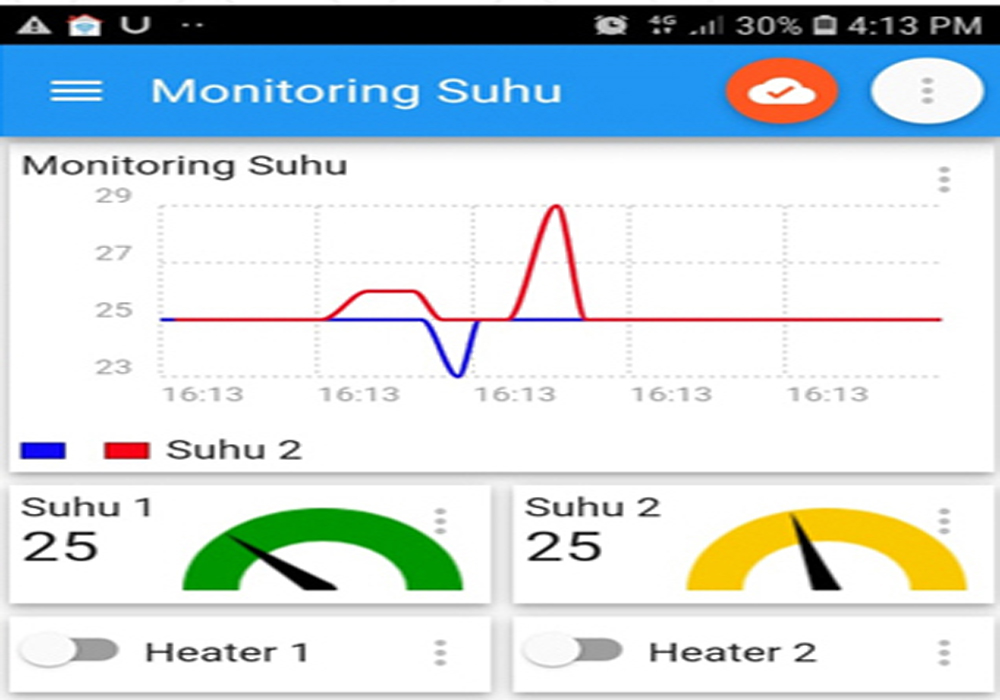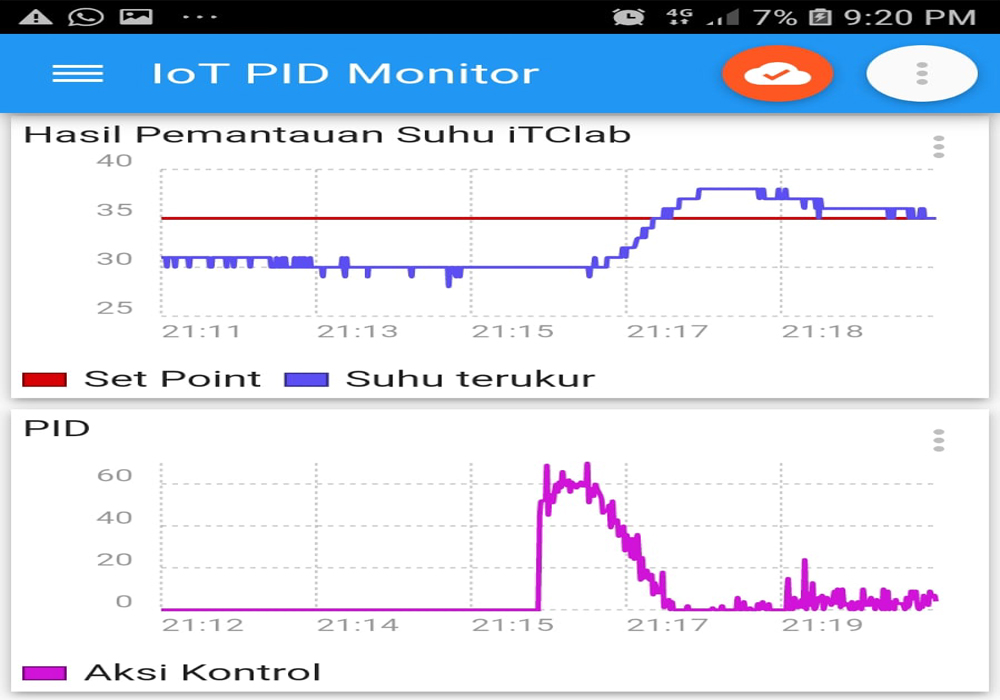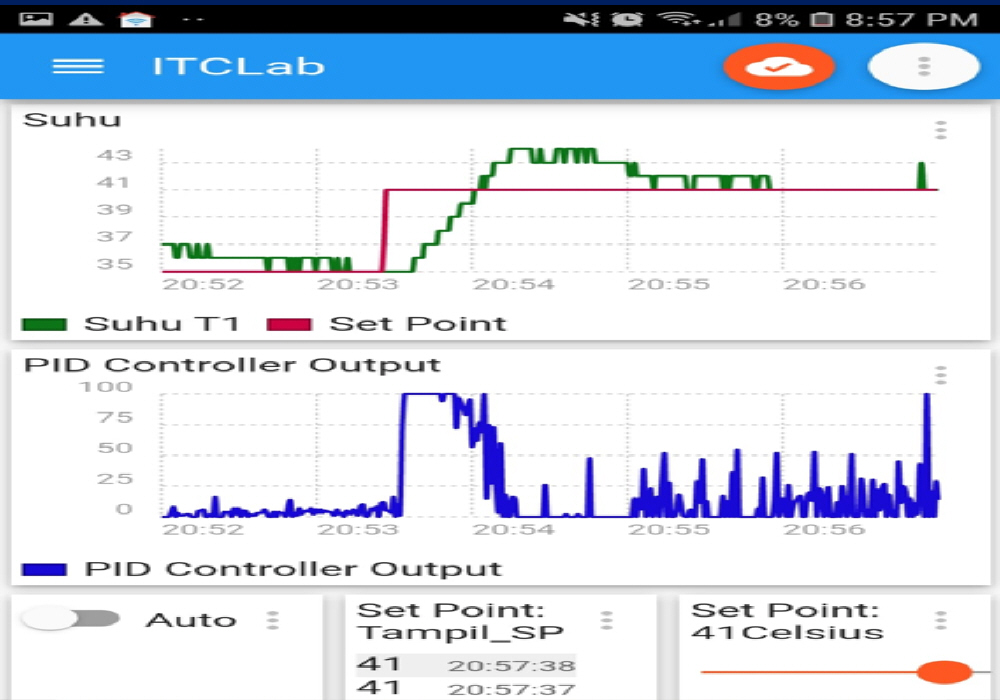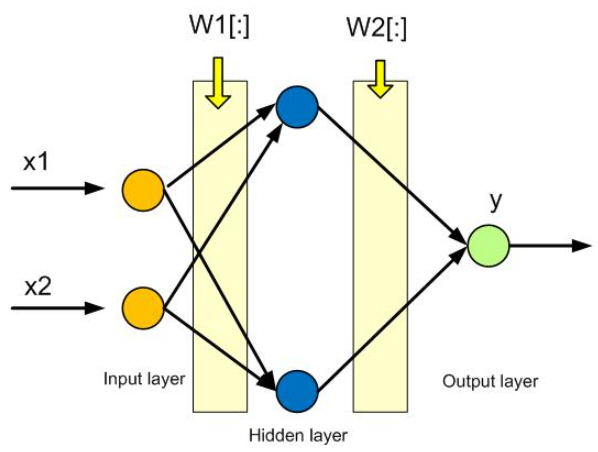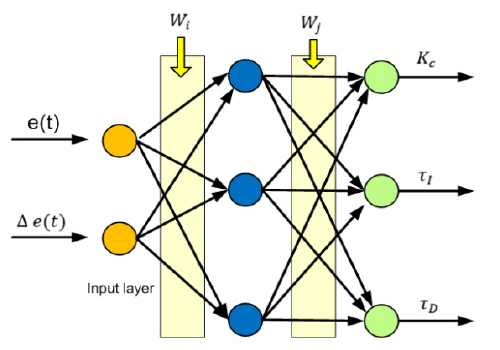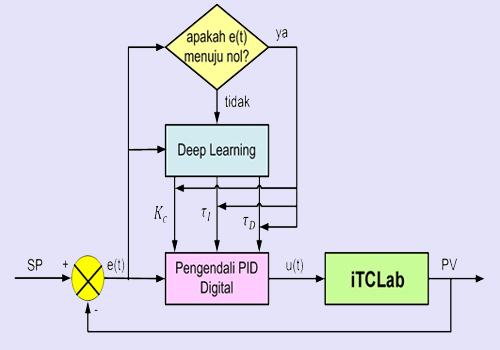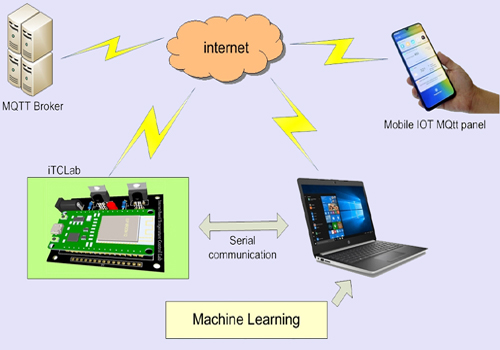Pengujian Kit iTCLab

Pengaturan File - Preferences:
Kit iTCLab menggunakan Mikrokontroller ESP32. Silahkan di-copy dan di-paste, di FIle - Preferences, alamat berikut ini:
https://dl.espressif.com/dl/package_esp32_index.json

Pengaturan Board.
Kit iTCLab menggunakan Mikrokontroller ESP32. Jika belum muncul. Untuk menggunakan pertama kali , silahkan diinstall ESP32 di Board Manager.

Pilihan Board.
Selanjutnya, silahkan dipilih Board: DOIT ESP32 DEVKIT V1.

Program Pengujian Kit iTCLab - Program ke-2
Berikut ini variasi lain, dari Program Pengujian kit iTCLab, memanfaatkan PWM Kit iTCLab.
/************************************* * Program : Pengujian Kit iTCLab 2 * Menggunakan Kit iTCLab * Oleh : Tim io-t.net * Surabaya, 10 April 2022 * ***********************************/ #include // constants const int baud = 115200; // serial baud rate // pin numbers corresponding to signals on the iTCLab Shield const int pinT1 = 34; // T1 const int pinT2 = 35; // T2 const int pinQ1 = 32; // Q1 const int pinQ2 = 33; // Q2 const int pinLED = 26; // LED // setting PWM properties const int freq = 5000; //5000 const int ledChannel = 0; const int Q1Channel = 1; const int Q2Channel = 2; const int resolutionLedChannel = 8; //Resolution 8, 10, 12, 15 const int resolutionQ1Channel = 8; //Resolution 8, 10, 12, 15 const int resolutionQ2Channel = 8; //Resolution 8, 10, 12, 15 float cel, cel1, degC, degC1; const float batas_suhu_atas = 55; // global variables float Q1 = 0; // value written to Q1 pin float Q2 = 0; // value written to Q2 pin int iwrite_max = 25; // integer value for writing int iwrite_min = 0; // integer value for writing void setup() { // put your setup code here, to run once: Serial.begin(baud); while (!Serial) { ; // wait for serial port to connect. } // configure pinQ1 PWM functionalitites ledcSetup(Q1Channel, freq, resolutionQ1Channel); // attach the channel to the pinQ1 to be controlled ledcAttachPin(pinQ1, Q1Channel); // configure pinQ2 PWM functionalitites ledcSetup(Q2Channel, freq, resolutionQ2Channel); // attach the channel to the pinQ2 to be controlled ledcAttachPin(pinQ2, Q2Channel); // configure pinLED PWM functionalitites ledcSetup(ledChannel, freq, resolutionLedChannel); // attach the channel to the pinLED to be controlled ledcAttachPin(pinLED, ledChannel); ledcWrite(Q1Channel,0); ledcWrite(Q2Channel,0); ledcWrite(ledChannel,0); } void Q1on(){ ledcWrite(Q1Channel,iwrite_max); //Q1 = iwrite_max/255*100; //Serial.println(Q1); } void Q1off(){ ledcWrite(Q1Channel,iwrite_min); //Q1 = iwrite_min/255*100; //Serial.println(Q1); } void Q2on(){ ledcWrite(Q2Channel,iwrite_max); //Q2 = iwrite_max/255*100; //Serial.println(Q2); } void Q2off(){ ledcWrite(Q2Channel,iwrite_min); //Q2 = iwrite_min/255*100; //Serial.println(Q2); } void ledon(){ ledcWrite(ledChannel,iwrite_max); } void ledoff(){ ledcWrite(ledChannel,iwrite_min); } void cektemp(){ degC = analogRead(pinT1) * 0.322265625 ; // use for 3.3v AREF cel = degC/10; degC1 = analogRead(pinT2) * 0.322265625 ; // use for 3.3v AREF cel1 = degC1/10; Serial.print("Temperature: "); Serial.print(cel); // print the temperature T1 in Celsius Serial.print("°C"); Serial.print(" ~ "); // separator between Celsius and Fahrenheit Serial.print(cel1); // print the temperature T2 in Celsius Serial.println("°C"); } void loop() { // put your main code here, to run repeatedly: cektemp(); if (cel > batas_suhu_atas){ Q1off(); ledon(); } else { Q1on(); ledoff(); } if (cel1 > batas_suhu_atas){ Q2off(); ledon(); } else { Q2on(); ledoff(); } delay (100); }
Download Program Pengujian Kit iTCLab (Program 2) dalam Arduino (silahkan klik-kanan Save link as), di sini : 02-Test_iTCLab2.ino..
Silahkan diupload ke Kit iTCLab. Silahkan cek hasilnya di serial monitor. Seharusnya hasilnya seperti gambar berikut ini.


